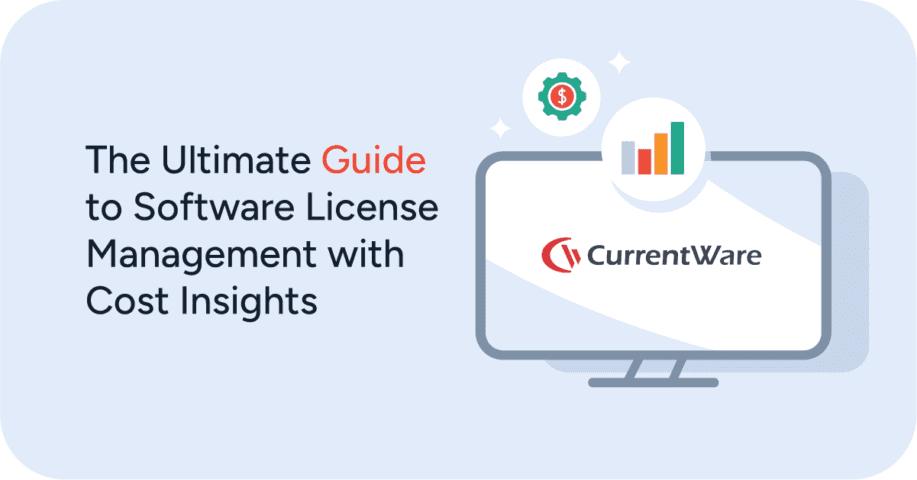How to Improve Employee Performance: 7+ Tips for Giving Effective Feedback

Are you struggling to address poor performance with a direct report?
Even if you have a great team with highly skilled employees, as a manager you will eventually be forced to have difficult conversations with employees who are performing poorly.
The good news is that it’s possible to set performance expectations and address an employee’s behavior in a way that both you and the employee will benefit from.
In this article we will show you how to tell an employee they need to improve; we will provide an overview of the importance of having this difficult conversation, how to tactfully address poor performance, and how to use an employee performance improvement plan (PIP) to fix poor performance in your organization.
Improve Employee Productivity With BrowseReporter Employee Monitoring Software
Ready to get advanced insights into how your employees spend their time? Get started today with a free trial off BrowseReporter, CurrentWare’s employee and computer monitoring software.
- Improve Productivity
Track unproductive web browsing and idle time to detect time-wasting - Save Time With Intuitive Reports
User-friendly reports make it easy to understand employee computer activity - Enhance Visibility
See how employees spend their time—even on Terminal Server and Remote Desktop Services!
Employee Performance Improvement Plan (PIP) Template
Using an employee performance improvement plan (PIP) you can keep track of performance issues, outline the desired expectations, establish the timeline you’ll be working with (typically 30, 60, or 90 days), the rate of growth you expect to see, and the dates for future check-ins.
This PIP template helps you explain the performance issues at hand, outline the resources that the employee can use to improve their performance, and keep track of the progress that is being made.
Get Your FREE Employee Performance Improvement Plan (PIP) Template
- Set expectations for underperforming employees
- Establish a timeline for improving on actionable goals
- Keep track of check-ins and milestones throughout the PIP
Get started today—Download the FREE template to correct employee productivity and conduct issues.
Before implementing a formal performance improvement plan it’s important to understand that many organizations misuse PIPs to build a case for a termination. Due to this practice employees that are presented with a PIP may misunderstand their employer’s intentions and assume that they need to find a new job rather than work hard to meet the expectations for their current role.
For this reason, as a best practice you should reserve the use of a PIP as a last resort for team members that are not responding well to other means of performance management such as informal check-ins and verbal/written warnings.
You must clearly communicate the true intention of the PIP: To provide clear guidance and support because you want to retain the otherwise capable employee.
Throughout the PIP you can use workforce analytics tools to analyze trends in performance metrics such as fluctuations in work hours, time spent on distractions, and the amount of time spent using critical software.
The Importance of Addressing an Employee’s Poor Performance
In an SHRM survey, 68% of respondents stated that their top concern with low performers is that they reduce morale, 54% said that low performers contribute to a lack of initiative and motivation, and 48% stated that they increase the work burden on high-performers.
If poor performance is left unaddressed, your other employees are bound to become resentful over time. After all, if poor performance is consistently tolerated (or seemingly rewarded with a lighter workload) why should they do things differently?
7 Ways to Tactfully Discuss Poor Performance
While it is absolutely critical to discuss poor performance, managers need to be aware that critical feedback and disciplinary action can contribute to lower morale for that employee.
As a manager you need to tactfully discuss poor work performance. Otherwise, this already difficult conversation may be further exacerbated with inadvertent hostility.
This section will provide you with tips for tactfully discussing poor work performance so that you can let the employee know that the managers of the company care for their wellbeing while not leaving poor performance unaddressed.
1) Identify the Root Cause of the Employee’s Performance Issues
One of the first things you need to do when addressing poor work performance is to have a conversation with the underperforming employee. This step is critical for collecting valuable information that will help you understand where the root cause of the poor performance is.
For example, if an otherwise stellar team member is suddenly struggling with poor performance it’s highly likely that there are personal problems or unaddressed grievances that are contributing to it.
If managers do not take the time to talk with their team members to truly understand the issue before jumping straight into disciplinary action they risk coming off as uninterested in the wellbeing of their team. This is certain to contribute to increased turnover and decreased job satisfaction.
Potential reasons for poor performance:
- A set of incompatible skills to perform the task
- Lack of support from the higher management
- Unresolved personal issues leading to stress and distraction
- An overwhelming workload that is leading to potential burnout
In addition to having a conversation with the affected employee you should also gather information from other sources; this will give you the most complete understanding of the issues and symptoms involved.
- Use employee productivity monitoring tools to understand how employees are spending their time and identify anomalies in their behavior
- Talk to other team members, managers, an HR professional, etc to get more context into the issue at hand and how poor performance has been affecting the rest of the team
2) Clearly Outline the Expected Behavior
During the conversation it’s critical that you not only provide examples of serious performance issues; you also need to bring possible solutions and set expectations for behaviors and skills.
After all, if even you can’t explain the desired outcome how is your team going to understand it? Without clear standards the time spent talking is only going to create further confusion.
Here are some tips for outlining expectations:
- Be respectful and don’t engage in small talk to postpone the issue.
- Avoid absolutes and provide a tangible example of both poor performance and optimal performance.
- Let the employee know what will happen if the situation is not resolved.
That said, the conversation should be partly collaborative as well. When you outline the expectations you can work with the employee to come up with solutions that tangibly address the issue at hand.
3) Have a Private One on One Meeting
When discussing an employee’s poor work performance you must do all that you can to provide a supportive environment where the employee feels safe to both provide and receive critical feedback.
When giving critical feedback it must not be done in front of other team members unless there is truly no other alternative. Being chastised in front of their team members will cause an employee to feel embarrassed and take the focus away from the heart of the conversation.
4) Encourage the Employee to Focus on Self-Evaluation
While a manager needs to provide the necessary structure and support, the employee should ultimately be in charge of their own development and growth.
If a person lacks the self awareness to set their own goals and expectations they are much more likely to continue struggling in their job.
When talking with an underperformer you should encourage them to self-reflect on where they are currently, where they’d like to be, and what they need to do to achieve their goals. From there you can work with them to set tangible and realistic goals and provide the resources they need to achieve success.
Recommended Reading: How to Motivate Underperforming Employees
5) Manage Your Emotional Intelligence
Emotional intelligence is the capacity to be aware of, control, and express one’s emotions, as well as the ability to handle interpersonal relationships judiciously and empathetically.
A CareerBuilder survey found that 71% of the employers value an employees’ emotional intelligence more than their IQ (Intelligence Quotient) when hiring and promoting employees. After all, a skilled person with a poor attitude and hostile behavior is a detriment to company culture.
Managers with strong emotional intelligence skills are better equipped to convey difficult messages to their team. After all, at the end of the day an employee is a person; managers with poor emotional intelligence can make an already uncomfortable situation worse by making an employee feel like they are being cornered or attacked.
As a manager, you need to be patient, calm, and empathetic when discussing poor performance with an employee. A strong sense of empathy and a supportive work environment is critical for giving your employees confidence in sharing their feelings about current challenges.
Be certain to use neutral body language, take the time to truly understand the issues that the person is experiencing, and understand that an employee’s job is only one aspect of who they are.
That said, addressing concerns with work performance requires actionable feedback; you can’t avoid addressing the heart of the matter. Be firm but fair in your approach to get the best results.
6) Offer Training & Mentorship
All the feedback in the world is of no use if an employee does not have the resources they need to meet expectations.
So long as a person is great to work with and they are willing to put in the work it takes to excel at their job it makes perfect sense to provide them with the training and mentorship they need to succeed.
Training and mentorship not only improves an employee’s performance, it also increases employee retention rates; 93% of employees surveyed by LinkedIn in 2018 stated that they will stay longer in a company that invests in their careers.
If there are insufficient in-house training opportunities you may want to advocate for another solution such as mentorship from industry experts and professional development opportunities from outsourced training providers.
7) Schedule Follow Ups
After the employee agrees to work toward improving their performance, set a follow-up date to discuss their progress and any blockers they may be experiencing. Also, in the long run, an employee training and development plan may help new and experienced employees learn, grow, and progress.
Here’s what you’ll cover in a follow-up meeting:
- Do they still understand what their goals are?
- Are they meeting the agreed-upon goals?
- Are additional resources required to bring their performance up to par for the current milestone?
Conclusion
If underperforming employees are not handled proactively it will critically impact company culture, employee retention, and productivity.
As a manager, you need to talk with underperformers to set clear expectations, establish realistic goals, and provide the resources they need to excel in their roles.
By following these performance management tips you can help retain your best talent, minimize the need for termination, and provide your employees with an opportunity to become high performers.
Improve Employee Productivity With
CurrentWare’s Remote Employee Monitoring Software
Ready to get advanced insights into how your employees spend their time? Reach out to the CurrentWare team for a demo of BrowseReporter, CurrentWare’s employee and computer monitoring software.
- Improve Productivity
Track unproductive web browsing and idle time to detect time-wasting - Save Time With Intuitive Reports
User-friendly reports make it easy to understand employee computer activity - Enhance Visibility
See how employees spend their time—even on Terminal Server and Remote Desktop Services!


